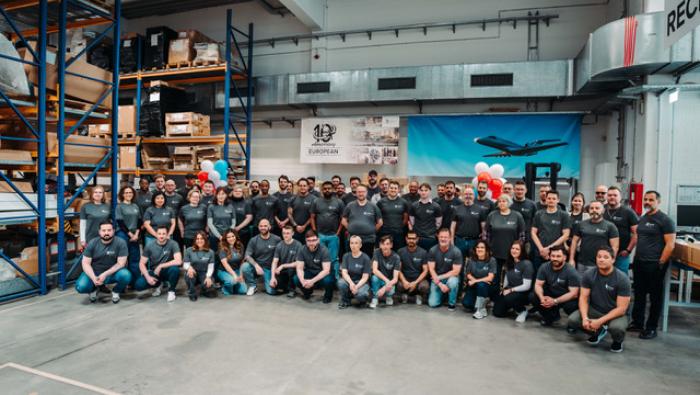Ruag (Booth No. 1313), the Swiss technology and defense corporation, has created or acquired six business aircraft maintenance and service establishments in Switzerland and Germany since its inception in 1999. It has now announced the setting up of a maintenance network linking the different shops into one operational unit called Ruag Aircraft Services Network. The goal is to exchange experience and personnel, to complement capabilities and to provide customers a full service portfolio near their base.
The oldest establishment in the chain is Ruag Oberpfaffenhofen, taken over from Dornier in 2003. It is the largest authorized Citation service center outside the U.S. and traditionally also services the Dornier 228 and 328 types. In 2008, it became an authorized maintenance center for all Bombardier jets as well, except the Learjet series. It is also active in interior refurbishment, and has a paint shop capable of accommodating up to single-aisle airliners and offers fleet management in addition to maintenance. With the help of Oberpfaffenhofen, the company has recently established a Cessna service center at Stuttgart airport.
Ruag Geneva, acquired under the name of Transairco from Pilatus in 2007, is a highly successful maintenance center for all types of Falcons, for the King Air line, the Hawker 400XP and the Pilatus PC-12, and also has a large paint shop.
Ruag Zurich is certified for the Legacy and most Gulfstream versions, while Ruag Bern and Lugano service aircraft of various types based at or near these airports. All maintenance centers have avionics shops and engine service capabilities up to hot-section inspections for turbine engines most used in executive aviation. The company recently restarted manufacturing the unpressurized Do 228 utility twin at Oberpfaffenhofen.
The Ruag group had sales of SwF1,409 million Swiss ($1,340 million) in 2007, up 13 percent, and earnings of SwF76 million ($72.2 million). While Ruag was a defense company pieced together from various suppliers of the Swiss armed forces in 1999, civilian sales exceeded defense business for the first time in 2007, accounting for 51 percent of the total.







